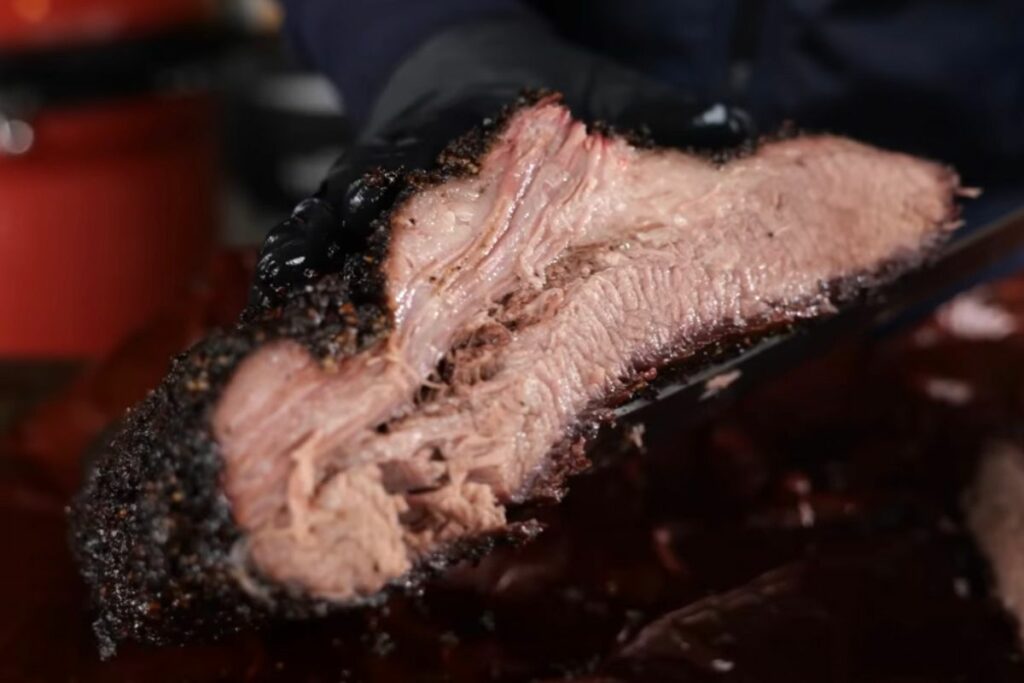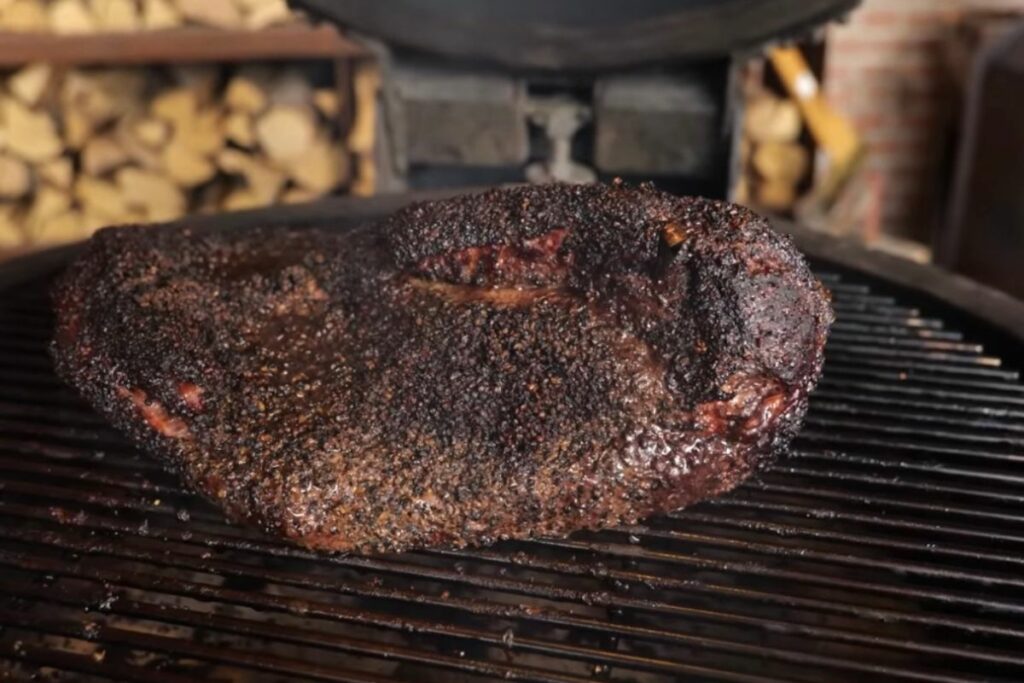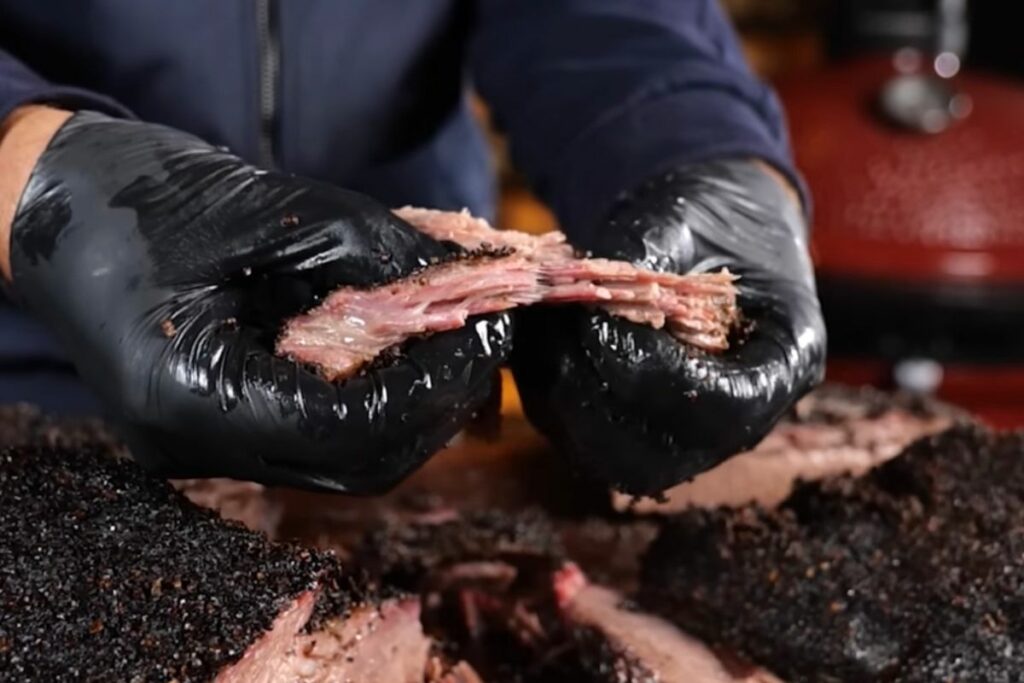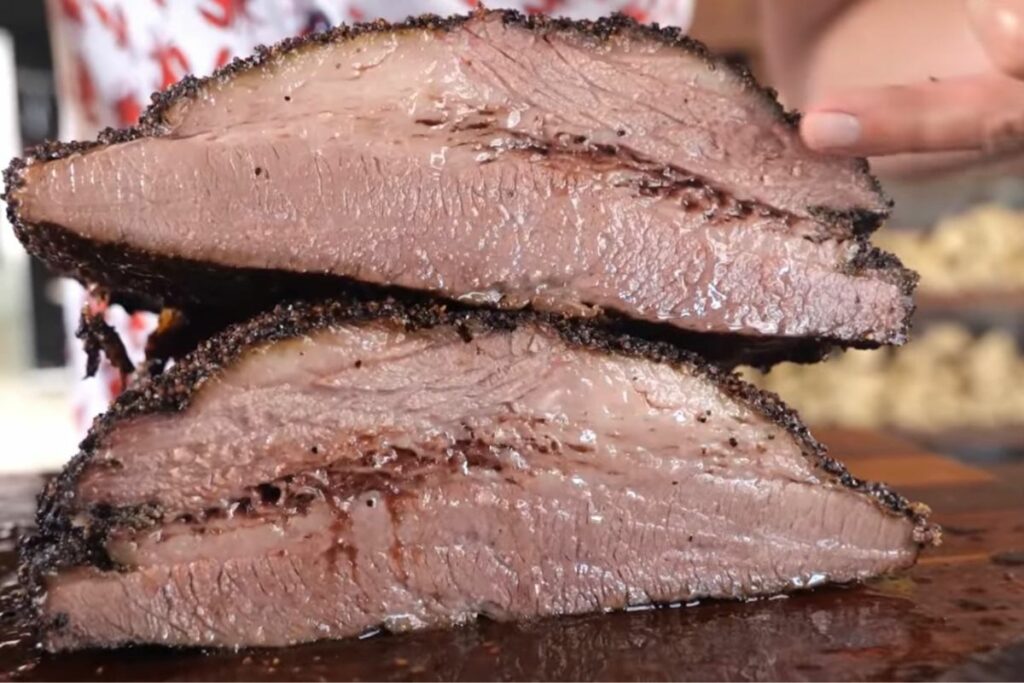Beef brisket – the favorite meat of many cooks, and many guests! It’s a great cut of meat to cut, and plays a part in so many great cookouts, and so many delicious meals! If you’re cooking a beef brisket, then you know just how important it is to get it right – after all, you’ve put a lot of time, money, and effort into this one piece of meat!
With that in mind, you’re likely looking for some tips on how to make your beef brisket the absolute best it can be. Well, one of the most important things that you can do for this great cut of meat is to make sure you’re cooking it at the optimum temperature, so that you get the absolute best taste and texture out of it!
We’ll show you what temperature your beef brisket should be cooked at, and even give you some other handy tips for cooking this amazing piece of beef. Read on to find out just how to cook beef brisket absolutely perfectly!

Why 210F?
There are two reasons why you’d choose a temperature of 210 degrees Fahrenheit to cook your delicious brisket.
Firstly – it’s far within safe guidelines! One of the most important things when cooking – in fact, the single most important factor, above all else – is food safety. You should always ensure that every single meal, every single piece of meat is cooked properly.
Not doing this is a surefire way to invite all sorts of nasty things to happen – food poisoning is a really horrible thing, and can cause all sorts of really unpleasant illnesses and diseases! Not just that, but if you don’t cook your meat properly, then you’re running the risk of having more than bacteria enter your body.
Certain meats such as beef and pork can even contain tapeworm eggs or larvae – and if you haven’t noticed it and discarded the meat, then proper cooking to safe temperatures can at least kill these horrible parasites before they enter your mouth.
This usually isn’t an issue in developed countries such as the US – but it’s yet another reason to be vigilant, and always ensure that your meat is cooked to a safe temperature!
There’s a handy chart available at FoodSafety.gov that will give you safe temperatures for certain types of meat. The temperature listed is how hot the internal temperature of the meat needs to reach to be considered safely cooked.
Looking at the chart, we can see that beef needs to reach a minimum temperature of 145 degrees Fahrenheit.
So far, so clear – 210 degrees Fahrenheit is far above the minimum safe temperature of 145 degrees! However, that still doesn’t explain why 210 is a great choice for a delicious beef brisket.
At an internal temperature of 210 degrees Fahrenheit, beef brisket is so tender and juicy that it’s pretty much as delicious as it’s possible for this beautiful cut of meat to get.
This temperature will practically guarantee that your beef brisket is not just cooked safely, but that it’s cooked to perfection. It’ll be more than just a meal, it’ll be a delicious cooking and eating experience that well justifies the time and effort – and of course, the money!

Checking The Temperature
Before you get started doing anything, there’s one really important thing to consider – how are you going to check the temperature of the meat? After all, how will you know if it has actually reached 210 degrees fahrenheit?
Well, there are a few ways that you can check this – but not all of them are as effective or reliable as others!
If you’re an experienced cook, you might be able to just eyeball it – you’ll know instinctively how close your beef brisket is to cooking perfection, just by looking at it. Of course, this means a lot of trial and error – nobody is a cookout god on their first try!
And, of course, all it takes is one failed cookout for the so-called expert to be the source of ire from a lot of hungry people. Perhaps you’re not as good at eyeballing it as you think you are!
You can cut the meat open in order to see how it looks inside. Well, great idea – except for a few problems. Firstly, (if the above paragraph didn’t make it obvious_ you can’t tell the exact temperature of a piece of meat just by looking at it – eyes can’t actually see temperature!
You might easily be fooled by a darker or lighter piece of meat, for example, into thinking that something is hotter or colder than it actually is.

Second of all – cutting into your meat while it’s still cooking ruins it! When you’re cooking meat, the juices in the meat are released, and tend to go towards the center of the meat – and you need to give the meat time to rest after taking it off the heat in order for these juices to have time to be reabsorbed into the rest of the meat.
If you cut into your meat too early, these juices are just going to run out. They make up so much of the flavor of your meat – these juices are a terrible thing to lose!
Not just that, but as your meat has lost some of its juices, it’s obviously going to be drier when the time comes to eat it. SO, not just the flavor, but the texture, and overall experience will all be affected – and not for the better!
No, cutting into your meat is right out, as is just eyeballing it – you’re doing nothing better than guesswork, and you could end up ruining a delicious piece of beef brisket.
INstead, the only way to be sure is to directly check the temperature of the meat internally. If you’re using a smoker with probes for this job, then great – you can use the smoker itself to help you monitor the temperature so that it reaches that crucial point of 210 degrees Fahrenheit.
If your equipment doesn’t come with any probes for this job, then you can get an inexpensive meat thermometer for the job instead. Simply poke the probe on the thermometer into your meat to check the internal temperature.
You might need to check at a few points to be sure that the temperature is consistent throughout the cut. Don’t overprobe though – every drop of those delicious meat juices that flows out when you poke it represents a little bit of flavor lost from the meat!
Preparation
One of the most important things to get right when preparing your brisket is – well, the preparation! You’re going to want to remove the silverskin if the butcher didn’t do it for you already – it’s a skin-like membrane that you’ll find on one side of the emat cut.
Make sure to trim the fat and sinew too – nobody wants a huge lump of hot fat or tough sinew in their meal!
A good quality rub or marinade will transform your beef brisket from just a delicious cut of meat, into a perfect piece of cooked meat – it’s the overtones and undertones of flavor that your marinade or rub adds that top the whole thing off, and make for a truly delicious piece of meat that you’ll be proud of, and that both you and your guests will go crazy for.
You don’t need to do anything overly complex with your added flavorings, as the deliciously cooked beef is going to do a lot of the work for you already – cooked to perfection, it’ll taste great on its own.
There are plenty of recipes and ideas out there too – with so many delicious ways to add flavorings to your beef brisket, you could try a new one out every time you cook this delicious cut of beef and never run out of new and great ways to cook it.

A great simple way is to simply rub salt and ground pepper into the meat for a while, and let it sit overnight! That’s one of the best things about this cut of meat, and of course about smoking it to cook it if that’s how you choose – you really don’t need to add a lot to it to make it taste amazing.
Of course, you don’t have to stop there – you could make a change as simple as adding a hint of garlic powder, or perhaps some barbecue style seasoning – in fact, the possibilities are endless, and you could make your flavorings as complex as you like.
You’ll always, however, be able to go back to good old reliable salt and pepper, and still get an amazing tasting brisket every single time.
Resting Time
Once you’ve got your beef brisket to that internal temperature of 210 degrees Fahrenheit that’s so crucial to the whole process, you’re probably super eager to start cutting, serving, and eating it – and surely anybody who’s smelled it cooking will feel the same!
Don’t do it! Your beef needs time to rest. This isn’t optional – for two reasons.
First of all, when you take it off the heat, it’s still cooking! There’s enough thermal mass in the beef brisket that it can hold heat and continue cooking for quite a long time after.
Second of all – and you’ll know this if you’ve been paying attention – you need to give the beef time to reabsorb all of the delicious, tasty juices that got pushed into the center of the meat when it was in the heat! If you don’t do this, they’ll simply flow all over the chopping board, and you’ll be missing out on a huge part of the flavor!
Conclusion
There you have it – a really simple and easy to follow guide to what the right temperature for your beef brisket is, why that temperature is 210 degrees Fahrenheit, and how you can prepare this great cut of beef and ensure that it tastes great every single time!
Hopefully you’ve learned something useful that you can take with you on your next cooking adventure – and make your next time cooking beef brisket even more fun and flavorful!
- Is Blue Steak Safe To Eat? - May 7, 2022
- How To Tell If Your Bratwurst Sausage Is Cooked - May 7, 2022
- The Internal Temperature For Tri Tip When Done - May 7, 2022








